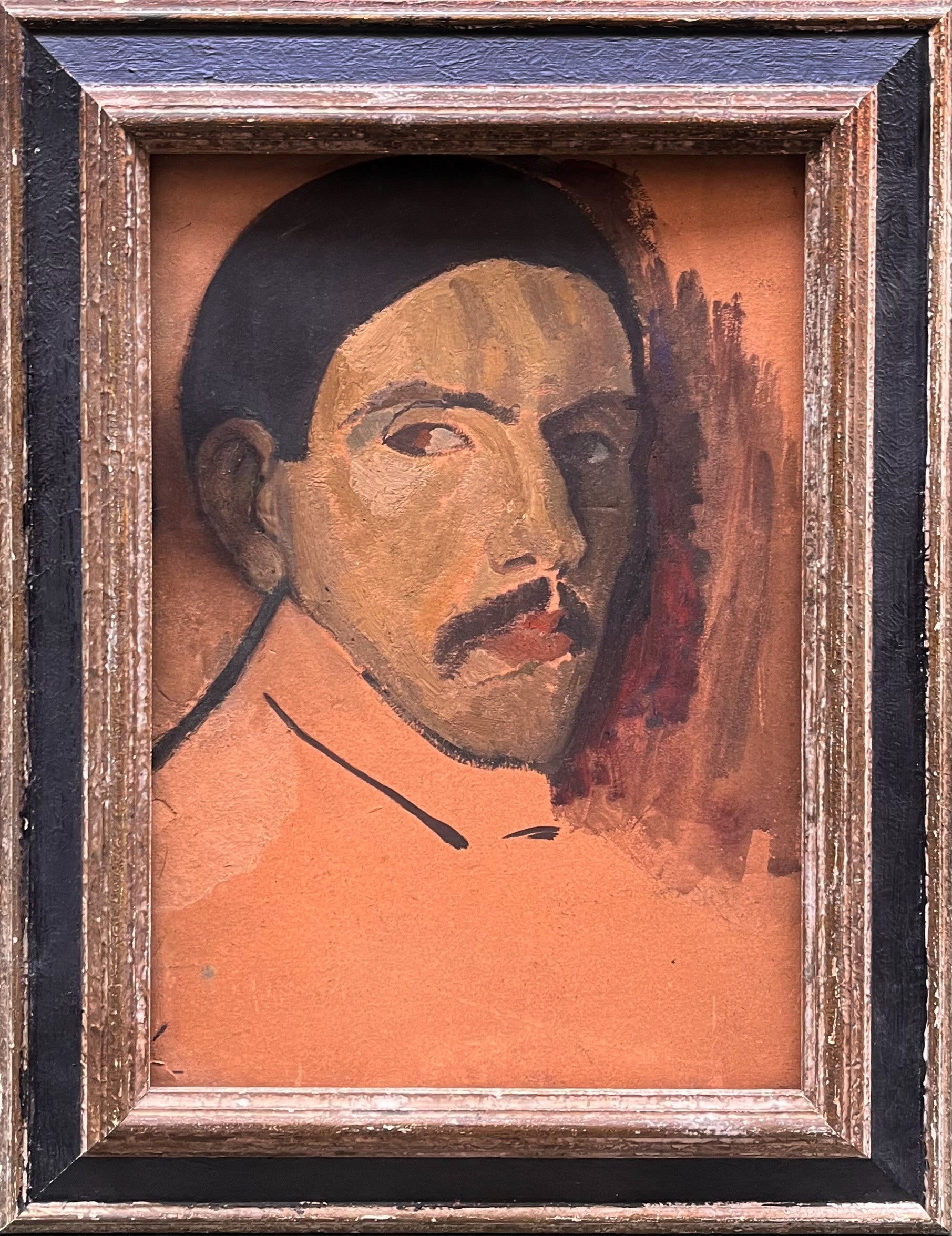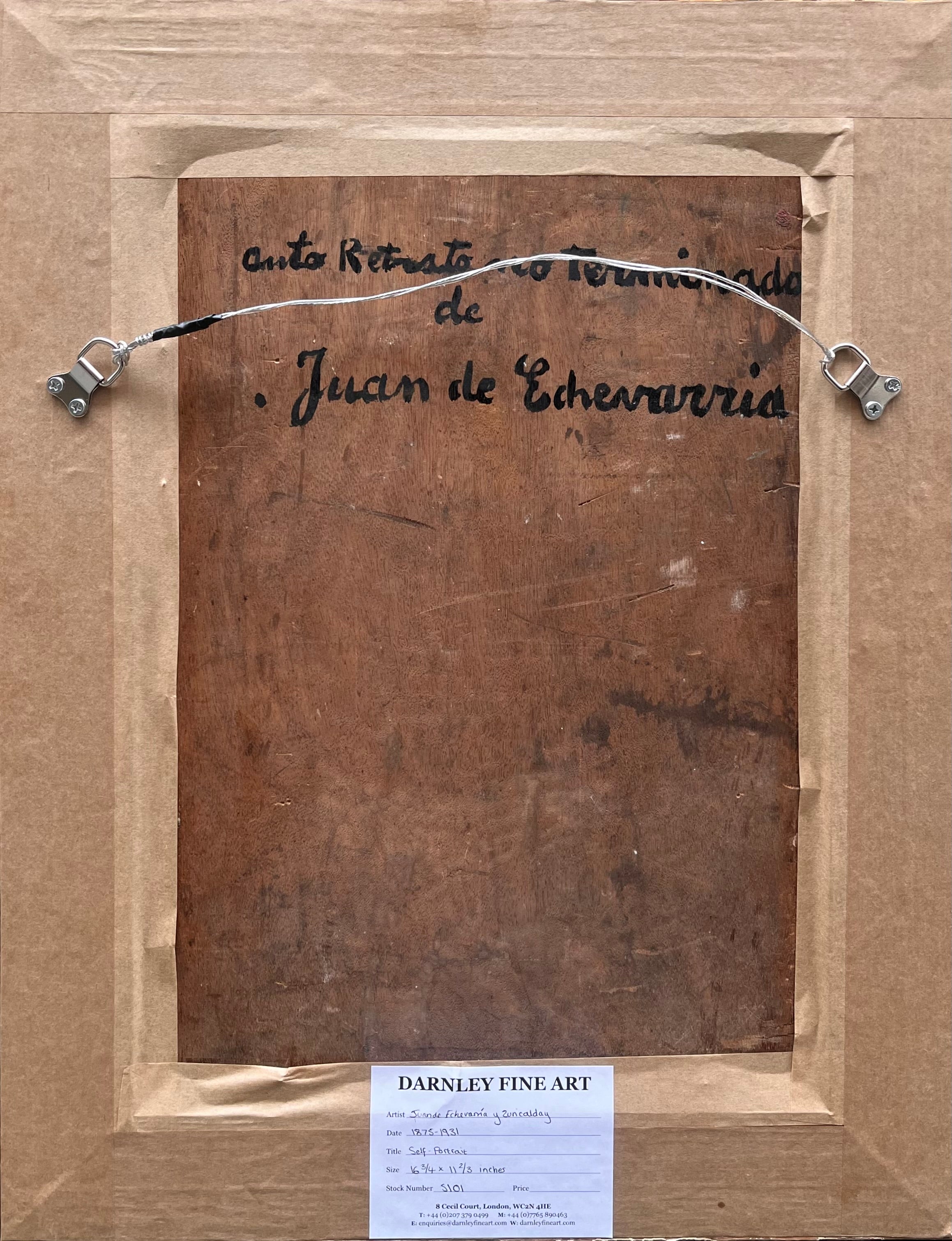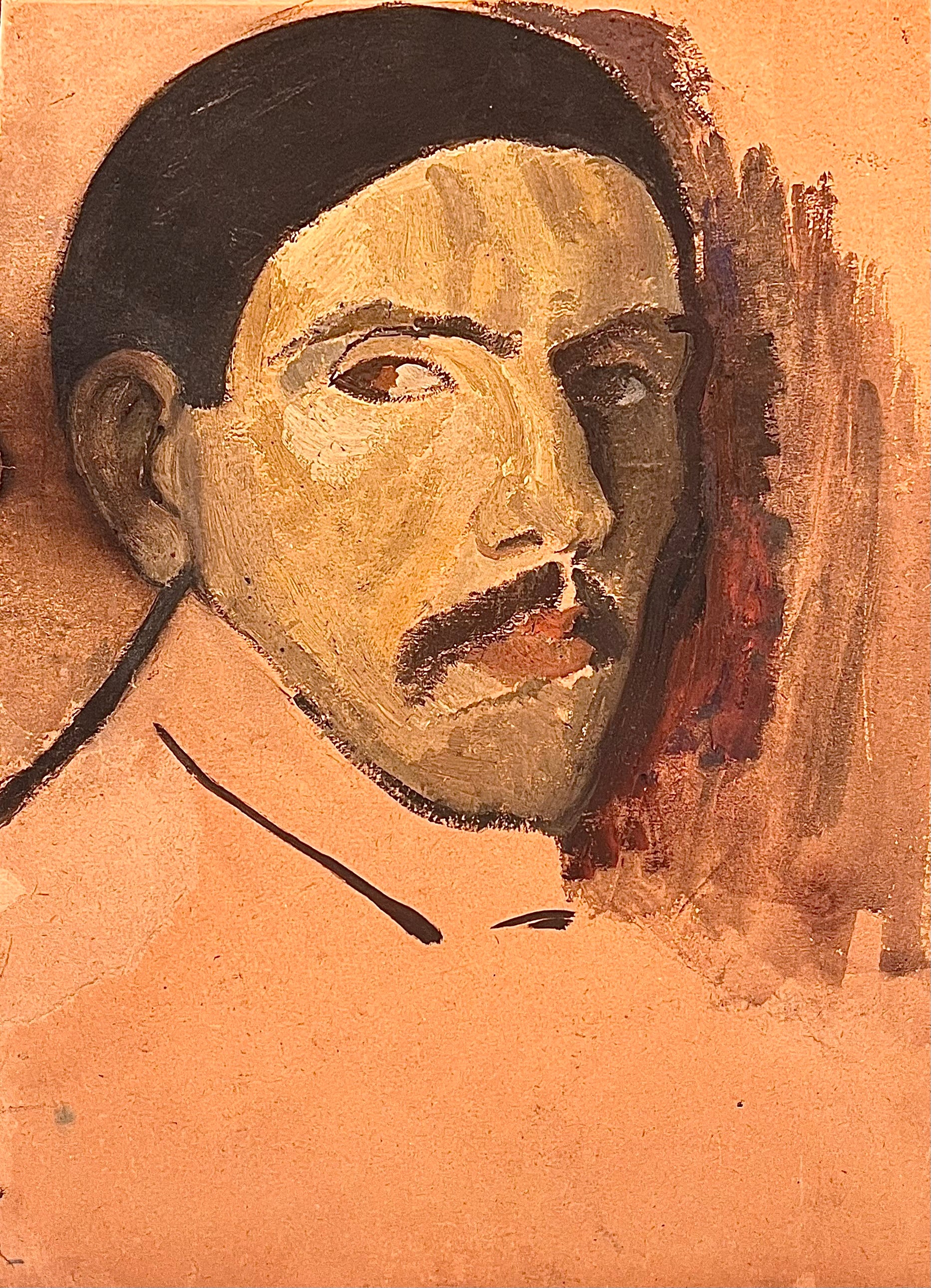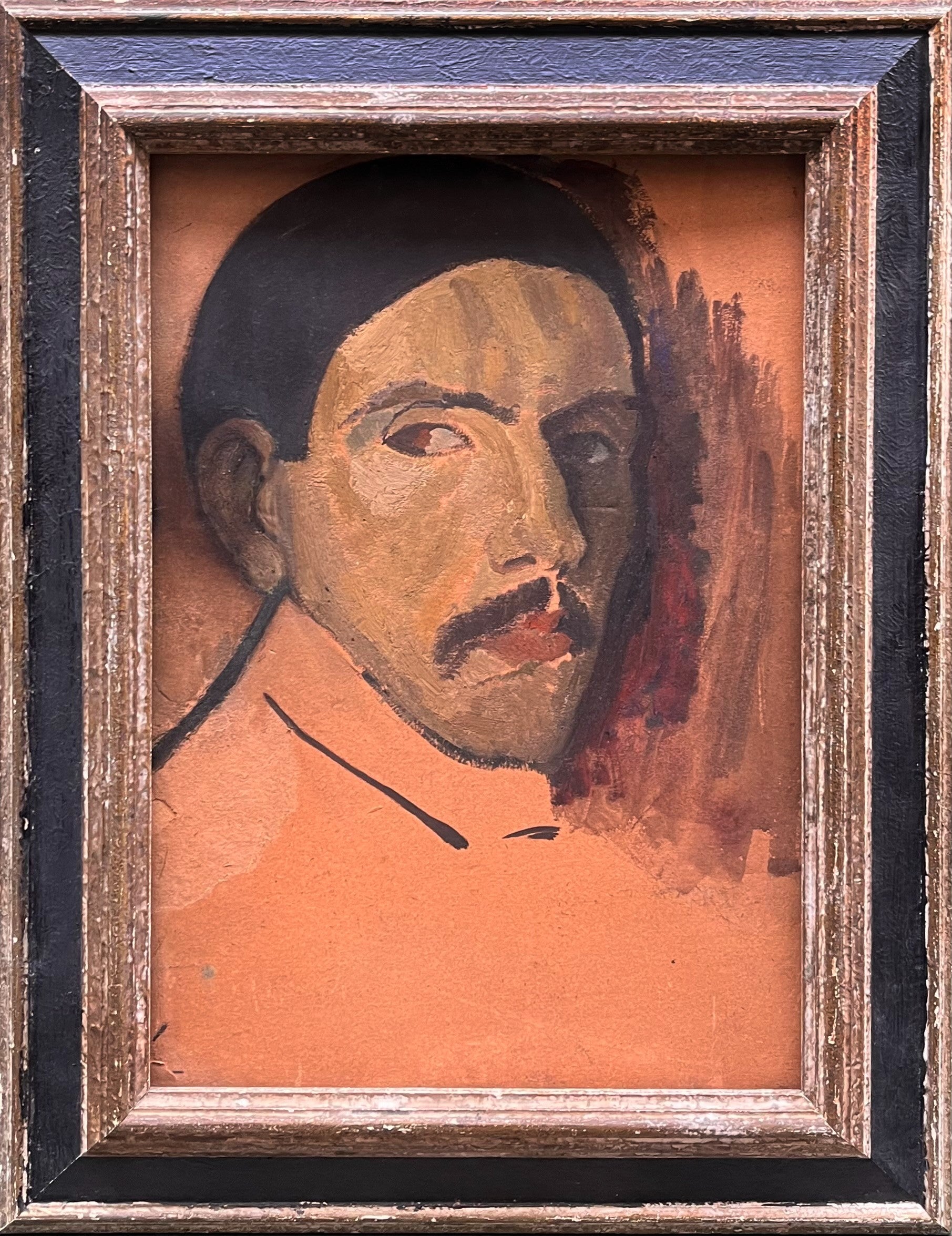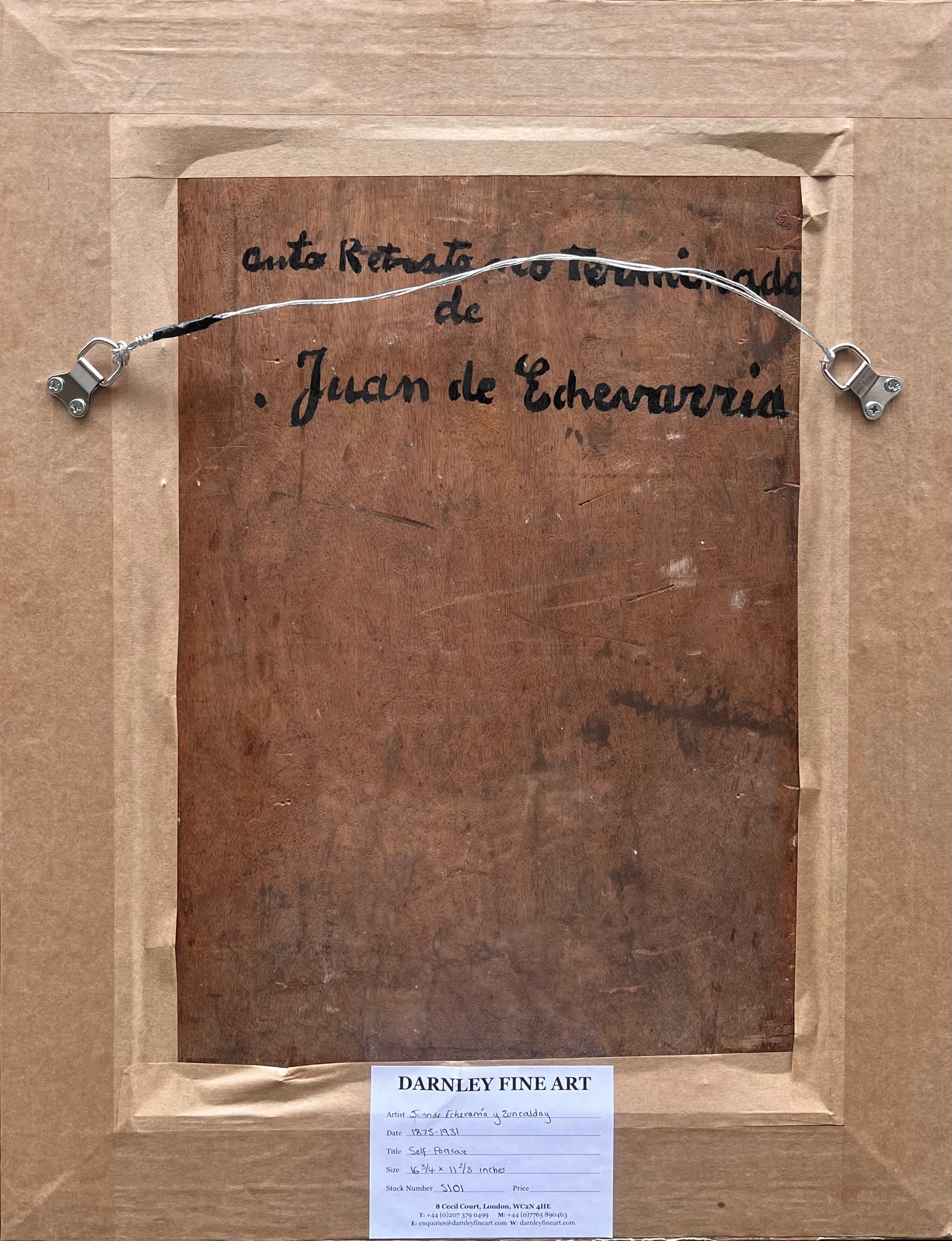
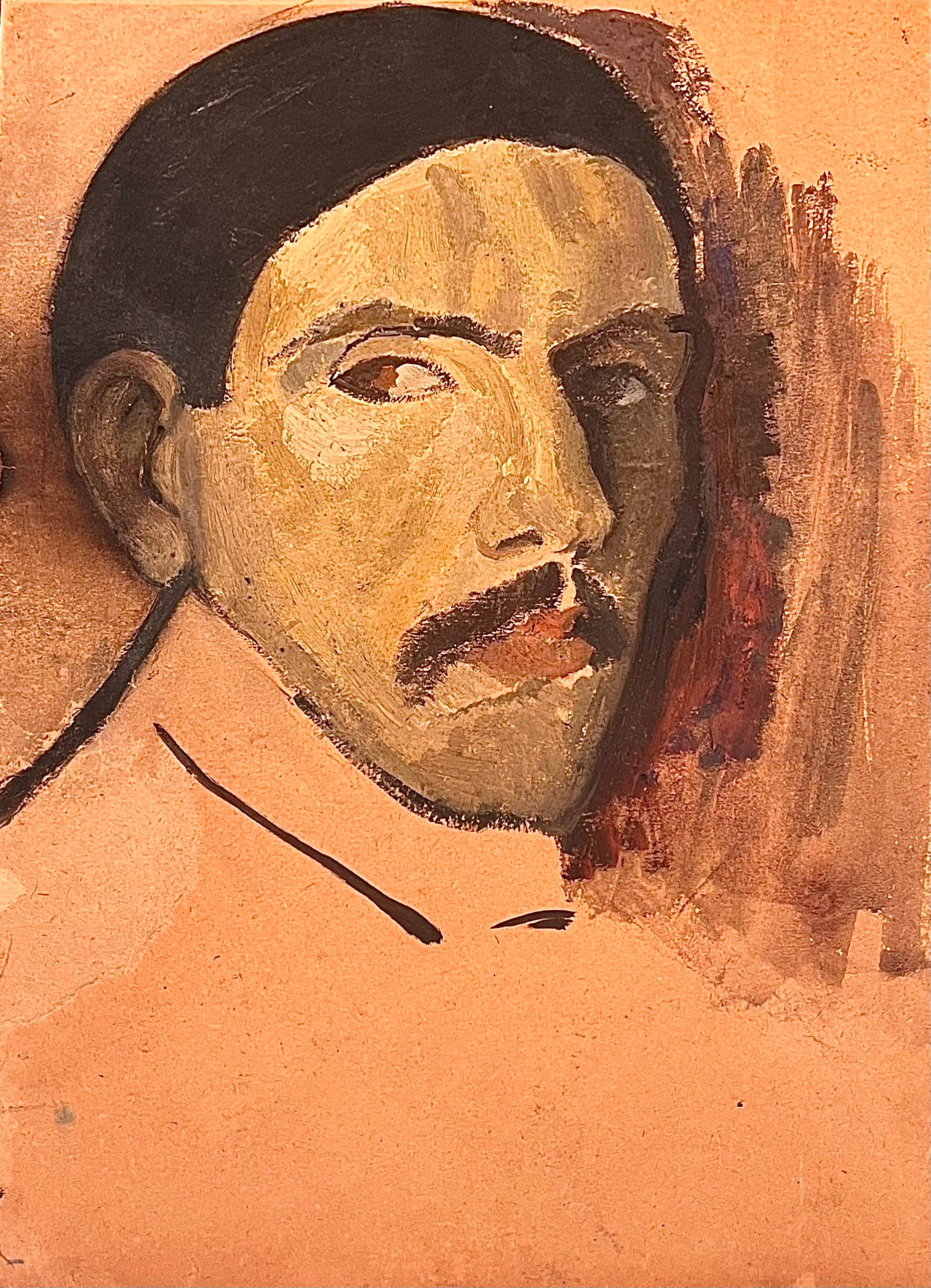
Juan de Echevarría y Zuricalday
Self-Portrait
Oil on card on board, signed and titled verso
Image size: 16 3/4 x 11 2/3 inches (42.5 x 29.5 cm)
Inscription verso:
"Auto retrato no terminado de Juan de Echevarria"
(Unfinished self-portrait of Juan de Echevarría)
This simple self-portrait displays a clear focus on the face of the artist, rather than his clothing or a background. The influence of the Post-Impressionist movement on Echevarría is evident in this work, with the Cloisonnist black outlines being reminiscent of Gauguin and Bernard. The heavy use of impasto furthers this association, and the unusual orange, red and yellow hues paired with the erratic brushstrokes demonstrate Echevarría’s Fauvist leanings. This self-portrait is the culmination of Echevarría’s artistic adventures in France, which has resulted in a unique blend of multiple modernist movements that were occurring across Europe in the early 20th century.
Juan de Echevarría Zuricalday
Juan de Echevarría was born in Bilbao in 1875 to a Basque bourgeois industrial family. He was educated at Angouleme in France, and then at Eton, and then undertook studies in engineering in Germany. Returning to Bilbao in 1897, Echevarría briefly worked at his family’s steel business, but abandoned this vocation to take up painting after the passing of his mother.
He initially studied at Manuel Losada’s Bilbao workshop, before travelling to Paris in 1903. Echevarría enrolled at the Academie Julian and formed friendships with artists and writers associated with the movement of Modernism and post-Impressionism. Echevarría took private lessons from Paco Durrio, who enabled him to have his first exhibition at the 1911 Salon d’Automne, where the Spaniard gained the attention of Guillaume Apollinaire.
During the First World War, Echevarría returned to Spain and painted local landscapes with a notable Primitivist aesthetic. He became close with the intellectuals of the Generation of 1898, creating many Fauvist-style portraits for them. After living in Bilbao, Granada and Avila, he eventually settled in Madrid. He became a member of the Society of Iberian Artists. served on the board of the Modern Art Museum, and helped found the Society of Basque Studies.
Echevarría exhibited regularly, but never outside of Spain - as a result of this insularity, he is often credited as being one of the artists who modernised Spanish art. He passed away in 1931 in Madrid, and a major retrospective was held in Paris’ Marcel Barheim gallery. In Spain, retrospectives were held in 1949, 1955, 1961, 1965 and 1978.

